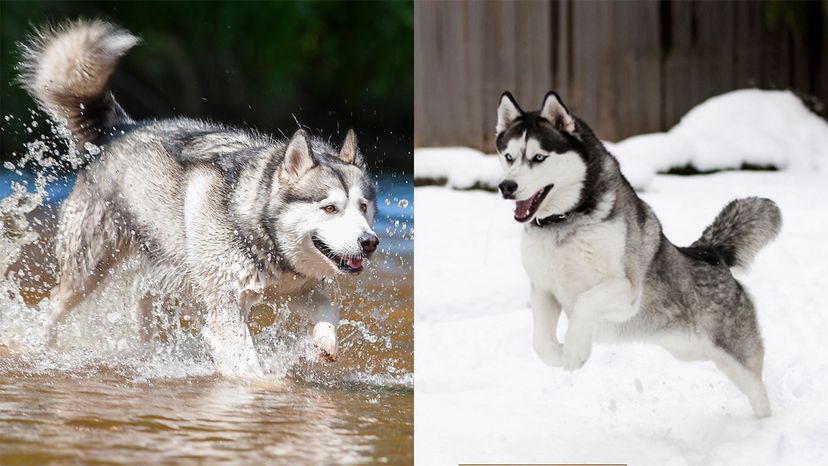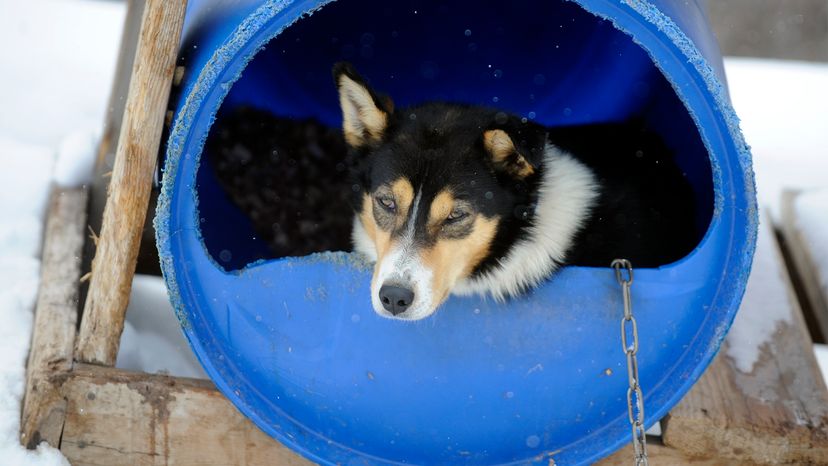But to complicate things even further, there's ANOTHER dog out there with a very similar name, which also bears a strong resemblance to Siberian huskies. It's the Alaskan malamute.
Unlike the Alaskan husky, the Alaskan malamute is an officially recognized dog breed according to the American Kennel Club. Like the Siberian husky, the Alaskan malamute is also part of the Working dog group. Alaskan malamutes, alongside Siberian huskies, are also occasionally trained as racing sled dogs. Hence, the two breeds have a number of physical similarities.
"Alaskan Malamutes and Siberian Huskies were both developed as working dogs for cold, snowy climates — hence their thick, double-layer coats consisting of a straight outer coat and dense undercoat," says DiNardo.
They're also pretty alike when it comes to behavior, training needs and communication. And boy, do they require a lot of dedicated training — and a lot of love. But they also give a lot of love in return.
"Both the Alaskan Malamute and the Siberian Husky are devoted to their owners and friendly dogs," says DiNardo. "They can have an independent nature so both benefit from early socialization and obedience training."
DiNardo offers specific advice for handling both breeds. Alaskan malamutes are adapted to carry heavy loads and thus need daily exercise, says DiNardo. Siberian huskies are well-suited for running and must adhere to a fitness schedule that keeps this factor in mind.
"Romping in a well-fenced yard or other enclosed space will suffice, but Malamutes also enjoy hiking, running, and swimming with their owners," says DiNardo. "Siberian Huskies were bred to run have a desire to run and should have regular exercise on-leash or in a securely fenced-in area."
DiNardo cautions that a failure to properly train or exercise Alaskan malamutes and Siberian huskies will wreak havoc on the well-being of both the owners and the dogs. "Both [breeds] require a job to do and without an outlet for mental and physical energy will resort to bad habits such as chewing and digging to alleviate boredom."
Although it's easy to confuse Alaskan malamutes and Siberian huskies, there are some notable differences. First, the Alaskan malamute clocks in around 75-85 pounds (34-39 kilograms), whereas the Siberian husky is typically smaller, between 40 and 60 pounds (18 and 27 kilograms), says DiNardo.
But if you're looking for a sure way to spot the difference between the two breeds, you need look no farther than their tails.
"A Malamute's pluming tail curls over his back, while a husky's tail does not curl to either side of the body, nor does it snap flat against the back," says DiNardo.
DiNardo dates the Alaskan malamute's working dog origins back to Inuit tribes in Alaska, who used the dogs to lug big game by working "in packs to haul heavy loads at low speeds over long distances," says DiNardo. "They were also used for carrying packs in the summer, locating seal breathing holes in the ice, and distracting bears on hunts."
Siberian huskies, on the other hand, can trace their working origins back to the Chukchi people of Northeast Asia and Siberia, who bred Siberian huskies predominantly as light-footed, compact and speedy sled dogs, according to DiNardo.
"In other words, Huskies are racers; Malamutes are freighters," says DiNardo.



